I love foraging for wild food and whilst most of the plants and herbs are for immediate use or cooking, there is not much you can use to bake with.
That was until I discovered that you can make flour from acorns, sweet chestnuts and other nuts you find in the wild.
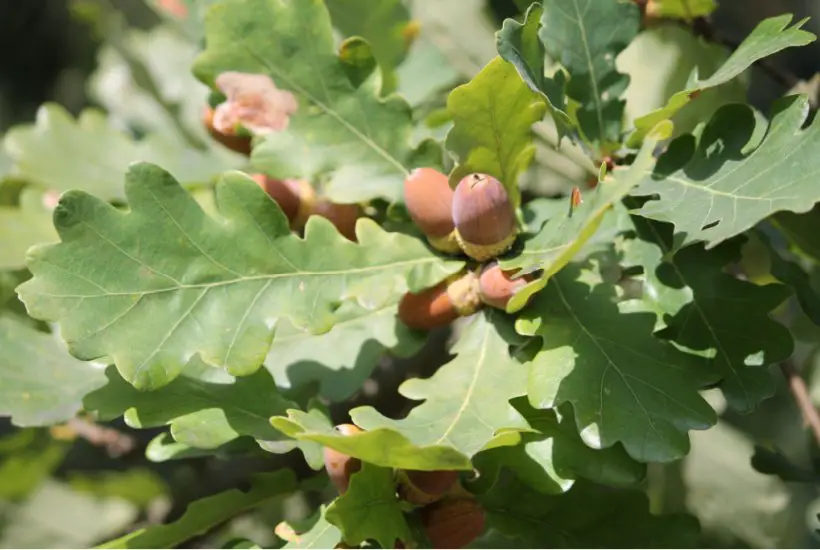
MORE IDEAS FOR FORAGING WILD FOOD
Why forage for acorns?
One thing to bear in mind, before you start foraging for acorns, that it’s not advisable to eat them raw.
They need to be processed before they are safe to eat. If you do try to eat them as they are you’ll be disappointed with the taste as they are very bitter.
The bitterness is caused by tannins which can be poisonous if you eat too many and they can make you quite ill.
I don’t want to alarm you to much as this point, because even basic foods like black tea contains tannins, so as long as you prepare your acorns properly you have nothing to worry about.
On the plus side, once you process them, acorns have a very high fat content, which is great for energy. They also contain protein and carbohydrates, which makes them ideal snacks or perfect to add as a flour to your baking.
PIN THIS FOR LATER
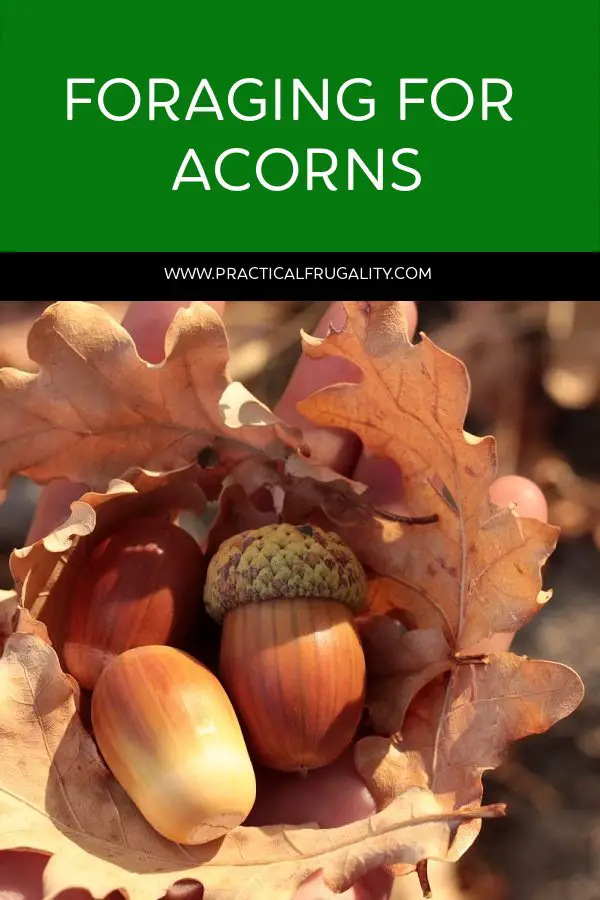
Collecting acorns
Acorns are very easy to find and forage for all. All you need to find is a oak tree in late summr to autumn and you can collect as much as you can carry home.
The best acorns are from white oaks as these have lower tannin content (than red oaks), but you can collect acorns from any oak tree you find.
There are specific types of oaks, like bur oak, that has nice and large acorns, which you will appreciate later, when you need to peel them all individually!
If you collect acorns from white oak it will take less time to get rid of the tannins, so you’ll be saving time later.
MORE EDIBLE PLANT GUIDES
- Rosebay Willowherb: Identification, Uses & Recipes >>
- Primrose: Foraging Guide & Culinary Uses >>
- Wild Horseradish: Identification, Uses & Recipes >>
How to store collected acorns
I find that it’s best to use the acorns straightaway when I get home (or the next day) to make sure they don’t dry or start developing any bacteria (like mould).
Don’t keep them in a plastic bag, but take them out and leave them spread out on a kitchen towel or something like that.
If you don’t have the time to process your acorns straightaway, you can also dry them first and then process them later.
Place them on a paper or in a wooden crates, in a single layer and keep them somewhere in the shade and warm for few weeks to dry.
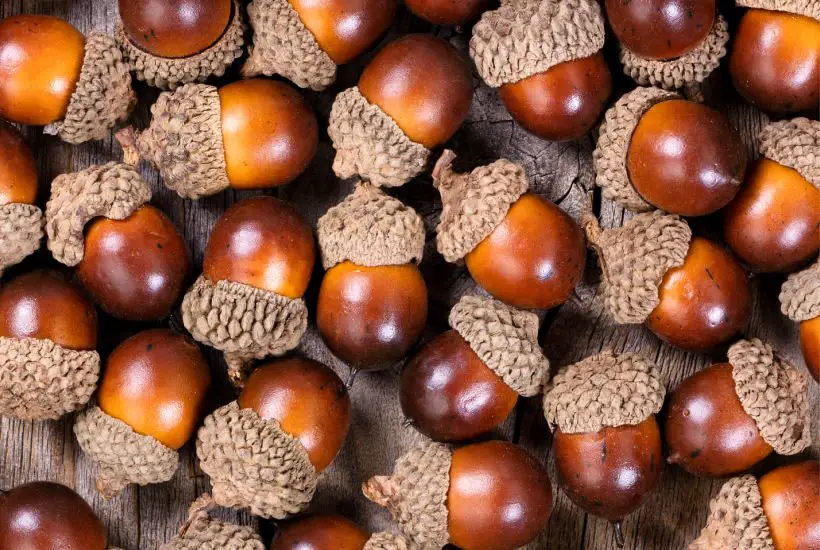
How to prepare acorns
Once you collect your acorns, check for any small holes in the shells. If you find any throw them away (or don’t collect them in the first place). The holes mean that the acorn has been eaten by lavas or insects and you really don’t want to eat those.
The next job is to twist the acorn tops off and then peel the hard acorn shell. The best way to do this is to use small sharp knife, but be careful as the shells are slippery and you can easily injure yourself. You can also first crack them with a nutcracker or something similar that will open them first.
To make the acorn shells softer you can also par-boil them first. Boil water in a large saucepan and add the acorns for 60 seconds then take them out straight away. Wait until they cool down a bit and then start taking the shells off.
Leaching out the tannin by boiling acorns in water
When your acorns are prepared put them in a large saucepan and cover with water. Boil the water, pour away and repeat several times.
This ensures that the toxic acorn tannin leeches out into the water and leaves your acorns perfectly edible. You’ll be able to see the tannin coming out of the acorns as it will make the water go white.
Make sure that you repeat the process several times until you have clear water. This can take up to 4 times, depending on how many acorns you have.
If you have an acorns with high tannin content (like red oaks), the hot water might not be enough to get rid of them and using the next method of cold water leaching might be preferable.
MORE EDIBLE PLANT GUIDES
- Wild Garlic: Identification, Uses & Recipes >>
- Rosehips: Foraging Guide, Recipes & Nutritional Info >>
- Dandelion: Foraging Guide, Recipes & Harvesting Tips >>
Cold water tannin leaching process
If you have more time (or your don’t want to keep boiling water, because you want to save energy), you can leave the acorns (shelled and prepared) in cold water overnight and pour the water out and change it every 12 hours or so.
You will need to repeat this 4-5 times until the water is clear. Tannins will make the water dark brown.
If you are camping or somewhere close to a running water (like a creak or a water stream) place the prepared acorns in a muslin bag (loose bag made of out cotton or a cotton shopping bag) tightly close, so that the acorns can’t escape, but make sure they can move around.
Secure it to a branch, stone or something firm and leave in the stream for at least 12 hrs.
How to check that your acorns are ready to eat
To check that your acorns are ready, just taste one!
If the acorns taste bitter, they still have residue of tannin in (which will look brown, like a tea), so keep boiling or changing the water until you are happy with the flavour.
Roasting Acorns
Once you’ve completed the steps above, place your acorns on a tray into a medium hot oven (around 180 C) for 15-20 minutes.
Check frequently to make sure you don’t burn your acorns and take them out when they are lightly roasted.
Eat as they are as a nutty snack or add to your cooking anywhere where you’d use nuts.
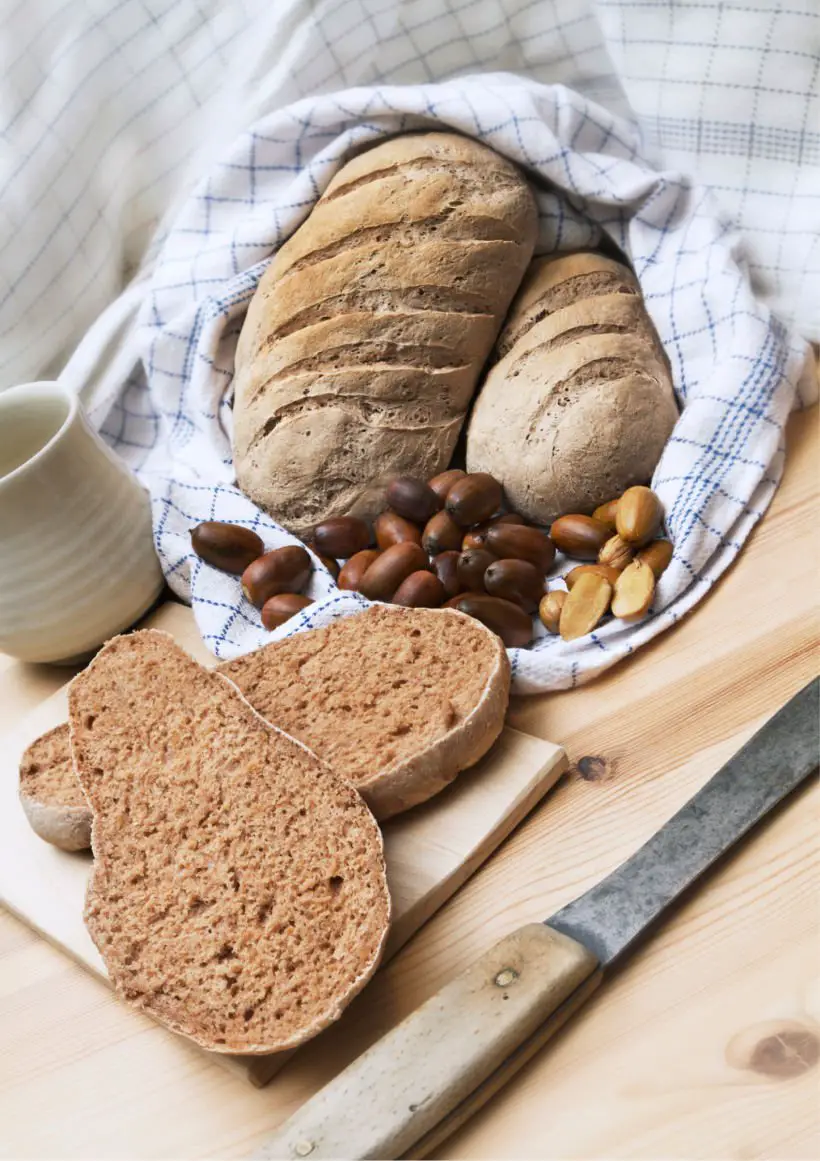
Acorn recipe ideas
Acorn coffee
If you are making an acorn coffee, follow the steps above and keep roasting for a little bit longer until you get darker roast. Grind in a coffee grinder and use as you would normally.
Acorn flour
Prepare your acorns by opening them, leaching them and roasting them for about 10 minutes until they are golden brown.
I prefer to use the cold water tannin leaching method when I’m making the acorn flour as boiling water tends to cook the acorns and also reduces their nutritional value.
To grind your flour you can use flour grinder (if you have one), food processor, mixer, coffee grinder or you can also do this manually with pester and mortar (or with a smooth stone).
Once you have a finer mixture of crums/flour, press it through a mesh colanger to get rid of the bigger pieces and put those through the grinder again.
It’s best to store your acorn flour in an airtight container and use fairly quickly (best within 4-6 months).
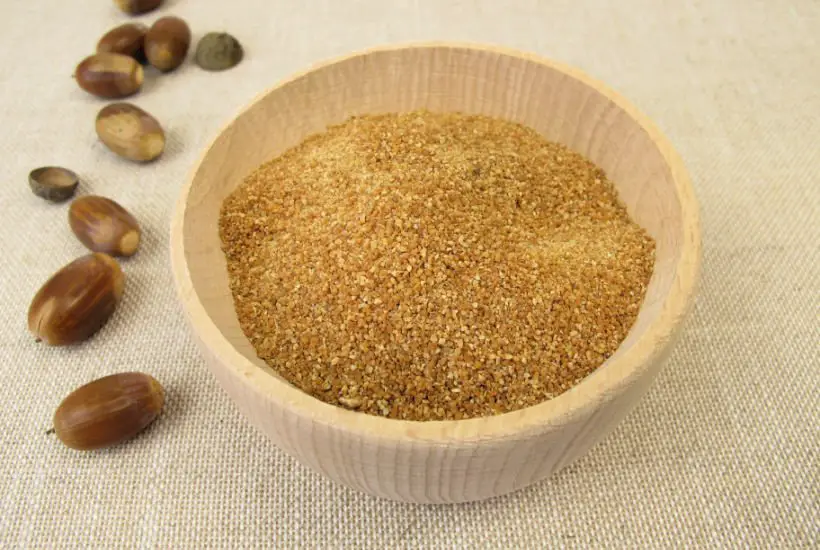
Adapting recipes to bake with acorn flour
Just a note about using acorn flour. You’ll notice that it’s much coarser then a fine wheat flour, so it’s difficult to use it exactly like wheat flour or replace your flour in the recipe 100%
I like to adapt my recipes, by swapping 25% max 50% or so of the main flour content as the acorn flour changes the texture of your bake.
For wholemeal dark bread, 50% of acorn flour is fine, but cake or tray bake can only take 20% before the structure of the cake mixture changes to much. You’ll also find, that recipe
s that have a naturally low amount of flour (such as brownies) and are baked as a tray bakes work reasonably well with 100% wheat flour to acorn flour swap.
Stay in touch
Hope this post inspires you and of course, I’d love to know what you think! Let me know in the comments below or find me on Instagram, Facebook or Twitter and add the hashtag #practicalfrugality so that I can see your post.
Or why not subscribe to my weekly newsletter with frugal living tips and recipes straight to your mailbox.
Magdalena
This blog post was originally published on 21/07/2020 and last updated on 14/08/2022.

Leave a Reply